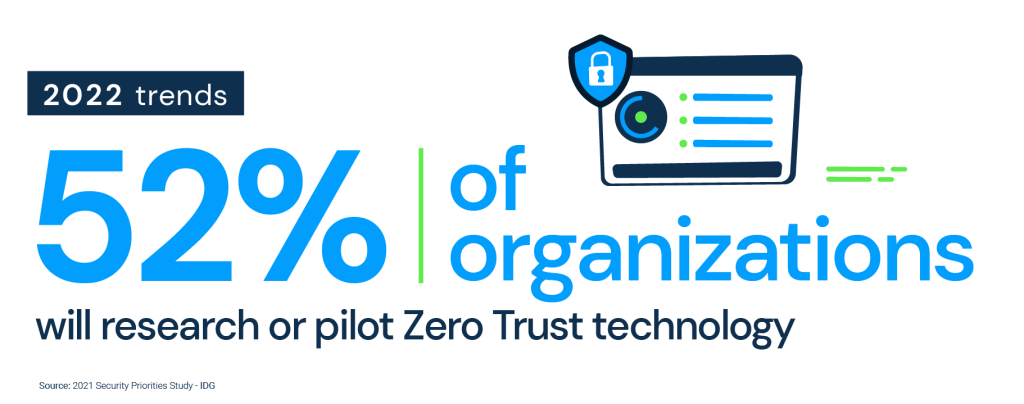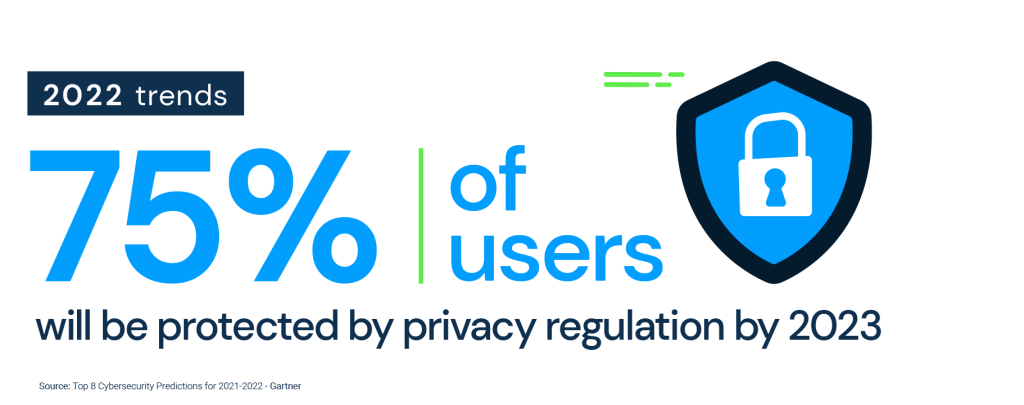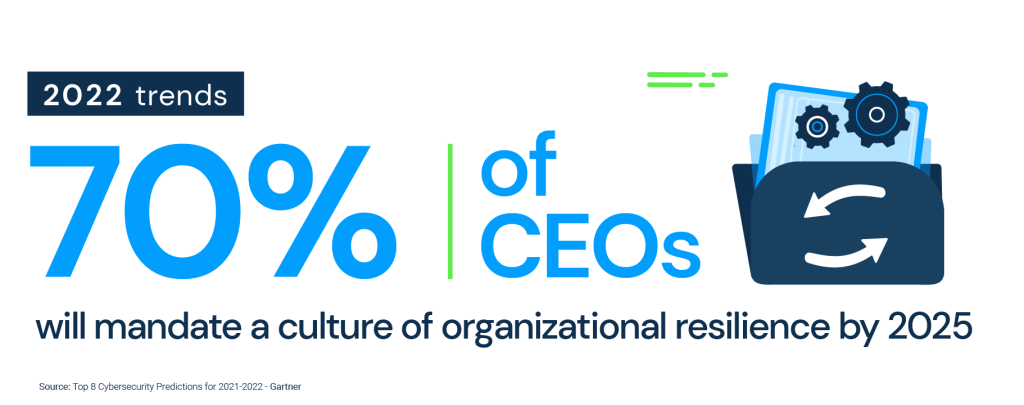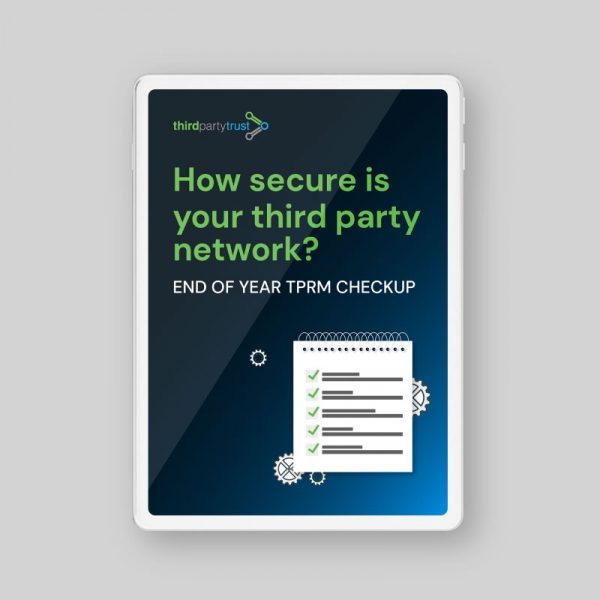3 TPRM Challenges That Organizations Will Face in 2022
Skill shortages, new privacy and security legislation, and business continuity were some of the main security concerns during 2021. Then, with the accelerated digital transformation in the new normal, supply chains became more complex with increased reliance on vendors that are scattered around the globe.
As a consequence, third party risk management (TPRM) was catapulted up the board agenda, but it’s more than just conducting vendor risk assessments. These are the top 3 TPRM challenges that organizations face as we head into 2022.
3 TPRM Challenges for 2022
1. Zero Trust Adoption
Zero Trust is a cybersecurity approach that restricts network access so only the right people are accessing the specific information they need. With employees, partners, and third party vendors accessing the corporate network, it’s critical to secure remote access connections.
Third party data breaches are all but certain to happen —Kaseya, SolarWinds, and Log4 were widely publicized, but many other security issues can arise from vendor relationships.
A survey by the Ponemon Institute found that over half of organizations (51%) have experienced a data breach caused by third parties that led to the misuse of sensitive or confidential information.
This makes it more urgent than ever to put complement any third party risk management program with additional layers to protect the business environment. Zero Trust presents as a promising alternative, with 52% of organizations planning to research or pilot this technology in 2022 according to an IDG survey.
Read More: The Basic Principles of Zero Trust and How To Implement Them
Unlike the perimeter security approach, based on the premise of ‘trust but verify’ everything inside a limited area, Zero Trust suggests that, by default, organizations should never trust any internal or external entity that enters their perimeter. This includes vendors.
Considering that hybrid work increased the attack surface, it’s not safe anymore to think there’s a delimited perimeter in which you can trust everything and everyone.

Pro Tip: You don’t need to come up with a sophisticated zero trust plan right away. You may already be using many of its ground tools and techniques, such as access controls based on the principle of least privilege, asset management, or network segmentation. From there, you can add additional layers for automation, orchestration, visibility, and analysis.
2. More Regulations and Bigger Expectations
The surge of regulation and higher standards pushes the industry to do more and ultimately has a positive impact on its security posture. Legislation for consumer privacy will keep rising —According to Gartner, by the end of 2023, it will cover the personal information of 75% of the world’s population.
Regulations tend to have a contagion effect. When it comes to privacy, GDPR paved the way for Brazil’s General Personal Data Protection Law (LGPD) and the California Consumer Privacy Act (CCPA).
Industry regulations, such as OWASP, PCI, NERC, and NIST remain a must. In addition, the percentage of nation states passing legislation to regulate ransomware payments, fines and negotiations will rise to 30% by the end of 2025, compared to less than 1% in 2021.
Customers and users alike will demand to know what kind of data you’re collecting and how it’s being used. Also, how you manage risk across your entire operational scheme.

This increasing standardization of desirable security levels will have an impact on enterprise risk management, as there are more risk domains to control and new methodologies to do it. For example, third party risk management goes beyond the usual third party risk assessment where you ask your vendor for certain security documentation. It becomes more holistic and less siloed, with the goal of managing cyber risks across the end-to-end supply chain.
Disciplines like Cyber Supply Chain Risk Management (C-SCRM) formalize standards on how to define, measure, control, manage, and overcome the challenges deriving from supply chain uncertainty. Supply chain risks include counterfeits and unauthorized production, tampering, theft, insertion of malicious software and hardware, poor manufacturing and development practices, and more.
Other disciplines like Environmental, Social, and Corporate Governance (ESG) set a standard on an organization’s collective conscientiousness for social and environmental factors. Businesses will not only be accountable for their own footprint and social impact, but also that of their third parties.
Pro Tip: As risk management keeps evolving and merging with other business functions, the demands of customers and partners are only growing stronger. It is critical to use technology as an enabler in order to stay ahead of these challenges.
3. Business Continuity and Operational Resilience
The pandemic disrupted global supply chains, exposing weaknesses, legacy issues, and the need for greater visibility in order to adapt more easily to new ground rules, such as hybrid work.
A small deviation from plan at one end can have large and costly effects up and down stream. Operational issues in the supply chain can impact information security, business continuity, collaboration, and compliance.
When the pandemic put every plan to real-life action, it became clear that resilience (from an operation, business, and organizational perspective) needs to be embedded into every process, project, and application.
However, traditionally, the security focus on third party risk management (TPRM) has been on how to protect data, not on outsourced services and resources. These times call for a reevaluation of priorities.
Read More: Data Security is Critical to TPRM, but don’t forget about Business Continuity
It’s clear now that organizational resilience is a culture. It’s more than Business Continuity Management (BCM), Operational Risk Management, Supply Chain Resilience or Third-Party Risk Management. It’s a combination of all of these, driven by a greater reliance on third party vendors, digital transformation, and rising cyberattacks.
Gartner predicts that by 2025, 70% of CEOs will mandate a culture of organizational resilience to survive coincident threats from cybercrime, severe weather events, civil unrest, and political instabilities.
Pro Tip: With the right tool that allows you to customize your due diligence and risk management process, you’re not limited to asking about cybersecurity. You have the ability to ask your vendors about any type of information and technology risk that you may identify in your risk profile. You can add all of this to your initial assessment and continuous monitoring process and thus take care of the availability aspect (internet connections, human processes, and more).

How To Face TPRM Challenges in 2022
Many of the challenges ahead call for more automation, in order to accelerate processes, increase visibility, and expand the scope of cybersecurity initiatives. The growing range of risks to manage and the increased regulatory pressure make automation essential, with the ability to reshuffle priorities and organize efforts.
Security leaders can leverage the power of automation technology to increase efficiency, reduce repetitive work in third party risk management, adopt continuous monitoring, and focus on the more strategic aspects of the program, rather than the administration.
Global regulators, customers, and business partners expect robust third party risk management programs. TPRM must be scalable, agile, and adaptable in order to support business growth while maintaining security standards.
Dedicated third party risk management (TPRM) solutions like ThirdPartyTrust also allow you to manage custom privileges for your third party vendors based on job titles, departments, and roles. This makes it easier to manage the provisioning and de-provisioning of user permissions, with network access based on the least-privilege principle and granular controls to restrict third-party remote access to only the application they need and nothing else.
Understanding the trends and challenges that 2022 has in store will help you build greater business resilience and stronger relationships. Learn how a robust third party risk management toolkit can help you stay ahead and take control of your supply chain:
Let us show you how to take your third party risk management to the next level. Talk to an expert today.

TPRM Checklist: How secure is your third party network?
Your TPRM program was funded and is now fully operational. Did you make sure it covers all the bases?
The end of the year is the right time to give your third party risk management strategy a quick checkup. Get ready for the year ahead with these 10 tips to detect gaps or areas for improvement.




